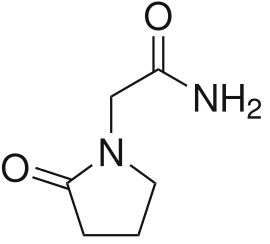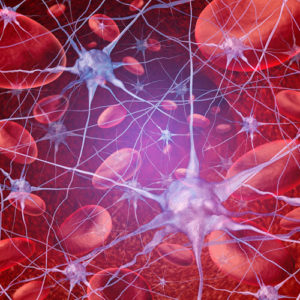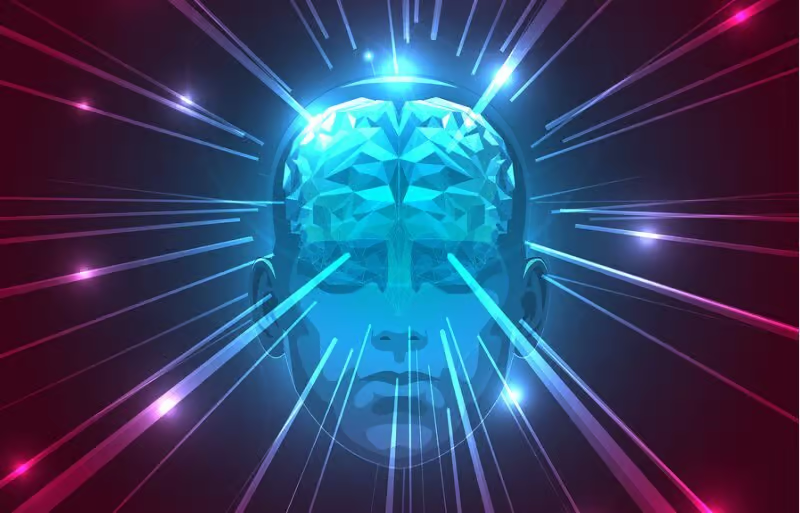Table of Contents
Piracetam (2-oxo-1-pyrrolidine-acetamide, Nootropil) is a water-soluble ampakine nootropic in the racetam-class of compounds.
Piracetam was first synthesized by Dr. Corneliu Giurgea at Belgian-based pharmaceutical company UCB Pharma in the 1964. Piracetam is considered the first true nootropic ever developed.
As a cyclic derivative of GABA, the drug Piracetam was first intended to be a calming type of drug for motion sickness. But in spite of its connection with GABA, Piracetam didn’t show any behavior associated with this calming neurotransmitter. And cannot directly affect GABA receptors.[i]
Instead, Dr. Giurgea discovered that Piracetam was able to boost cognition even in healthy people. The company launched this new ‘drug’ as ‘Nootropil’ in Europe in the early 1970’s. The success of Nootropil soon allowed UCB Pharma to expand its operations which led to many new pharmaceutical drugs.
Dr. Giurgea coined the term “nootropic” to describe this class of cognition-optimizing compounds.[ii] Nootropic was derived from the Greek words for “mind” (noos) and “towards” (tropein).
Piracetam is sold as a prescription drug (Nootropil and Lucetam) in Europe. In South America, Piracetam is sold under the names Noostan (Argentina), Breinox (Venezuela and Ecuador), and Nootropil (Mexico). Piracetam is also branded as Lucetam, Oikamid, Smart, Geratam, Biotropil, Neurobasal, Stimulan and Nocetan in countries around the world.
In the United States, Piracetam is sold as an OTC supplement as Piracetam and Nootropil.
Dozens of racetam derivatives have since been developed based on the original Piracetam. All synthetic compounds, racetams share a pyrrolidone nucleus.
Piracetam modulates AMPA receptors, and boosts the function of acetylcholine in the brain. A favorite racetam among the nootropics community. Neurohackers use Piracetam to boost cognitive function and learning and memory.
If you’re going to start experimenting with racetams, my recommendation at Nootropics Expert is to start with Piracetam. Because it works, it’s safe and it’s cheaper than all the other nootropics in the racetam-family.
Piracetam helps:
- Inflammation: Piracetam is a potent analgesic (anti-pain). This analgesic effect is related to inhibition of inflammatory markers including IL-1β. And the prevention of reduced glutathione, ferric reducing ability and free radical scavenging[iii]
- Neurotransmitters: Piracetam potentiates the flow of, and increases the effect of acetylcholine (ACh) in the brain.[iv] And studies have shown it significantly improves learning and memory.[v]
- Cerebral Blood Flow: Randomized controlled trials show Piracetam increases blood flow in the brain.[vi] Better blood flow delivers more oxygen and nutrients to neurons improving cognition, memory and focus.
What is Piracetam?
Piracetam (2-oxo-1-pyrrolidine-acetamide, Nootropil) was the first in the racetam-family of nootropic compounds. It is a water-soluble ampakine nootropic. AMPA (α-amino-3-hydroxy-5-methyl-4-isoxazolepropionic) refers to one of three glutamate receptors in your brain.[vii]

Developed by a fellow of famous Russian physiologist Ivan Pavlov, Dr. Corneliu Giurgea first synthesized Piracetam at Belgian-based pharmaceutical company UCB Pharma in the 1964.
Since the discovery of Piracetam, dozens of piracetam like drugs (nootropics) have been created in the racetam-class of compounds. And all have a pyrrolidone nucleus at their core.
Piracetam is a cyclic derivative of GABA. But oddly enough, it doesn’t affect GABA receptors in the brain. Instead, Piracetam was found to modulate AMPA and NMDA receptors and improve the function of the neurotransmitter acetylcholine (ACh).
AMPA and NMDA receptors along with acetylcholine are associated with learning and memory.[viii] And when Piracetam is stacked with a choline supplement its effects are even more pronounced. Researchers have shown in hundreds of clinical studies that Piracetam therapy significantly improves learning and memory.
Piracetam also increases regional cerebral blood flow. Blood delivers oxygen and glucose needed for cellular metabolism, and helps carry away cellular waste. Critical for the highly optimized brain.
Piracetam is sold as a prescription drug in many countries around the world. In the United States, Piracetam is sold as an unregulated OTC research compound.
How does Piracetam work in the Brain?
Piracetam boosts brain health and function in several ways. But two in particular stand out.
- Piracetam modulates AMPA and NMDA receptors in the brain. And improves the flow of acetylcholine (ACh) and sensitivity and density of ACh receptors.[ix]
This German study conducted with lab mice showed the pharmacological properties of Piracetam treatment elevated NMDA receptor density. And normalized the way those receptors worked with L-Glutamate similar to that of a healthy brain.
Deficits at the level of NMDA receptors could be one of the mechanisms of action underlying age-related cognitive decline. Studies show that nootropics like piracetam might act in part by restoring age-related deficits of central muscarinic cholinergic receptor density. And the researchers concluded that Piracetam showed cognition-enhancing properties.[x]
This effect on NMDA receptor sites is directly related to our interest in using Piracetam for Long-Term Potentiation and the support of long-term memory formation.
Neuroplasticity is dependent on activation of NMDA receptors.[xi] And this neuroplasticity is at the heart of memory formation. Reviews of Piracetam used by neurohackers frequently report the return of long-lost memories. Further proof of the efficacy in using Piracetam to support learning and memory.
- Piracetam increases cerebral blood flow. Several studies have shown how Piracetam positively influences brain blood flow. Cerebral blood flow is critical for cognitive function and the highly optimized brain. Blood delivers oxygen and local cerebral glucose utilization needed for cellular metabolism, and helps carry away cellular waste.[xii]
Strokes can be caused by an interruption in cerebral blood flow. Starving parts of the brain of oxygen and glucose. This double-blind, placebo-controlled study was done with 24 stroke patients. One group received 2,400 mg of Piracetam twice daily, and the other a placebo.
Before treatment, both groups were comparable in performance during language tasks. The study found that Piracetam treatment improved recovery of various language functions. And this effect was attributed to increased blood circulation to areas of the brain related to language. The placebo group showed very little improvement in areas of language.[xiii]
How things go bad
As we get older, our brain chemistry and metabolism changes. And it seems these changes are affecting younger and younger people.
↓ Recall, reaction time and learning capacity declines
↓ ATP energy levels decline
↓ Density of AMPA and NMDA receptors decline
↓ Acetylcholine levels decline
↓ Cerebral blood flow declines
All of these changes are contributing factors to age-related cognitive decline. Early signs of these effects can be seen in poor decision-making, difficulty learning, and even recalling simple things like an important appointment.
But even if you’re not concerned with the signs of aging, Piracetam can help.
Piracetam benefits
Piracetam helps increase blood flow in the brain, improves oxygen levels, enhances glucose use in brain cells, maintains brain cell mitochondria and ATP synthesis.
Piracetam is also a potent modulator of AMPA-sensitive glutamate receptors in neurons. It increases the density of specific binding sites for AMPA in neuronal synapses.[xiv]
Glutamate is the primary excitatory neurotransmitter in your brain. This glutamate activity by Piracetam affects alertness, focus, attention, memory and learning. And one of the reasons why neurohackers consistently report that Piracetam improves mental performance and memory.
Piracetam increases high-affinity choline uptake (HACU) which is the process that occurs in cholinergic nerve endings and facilitates acetylcholine (ACh) formation. Boosting ACh with Piracetam produces a powerful effect on learning and memory.[xv]
Piracetam also boosts choline receptor density in the frontal cortex. The area of your brain used for working memory and decision-making.[xvi]
ATP energy is critical to your brain’s survival. Brain cells must produce all of their own ATP from glucose and oxygen. This brain energy carbohydrate metabolism depends on cerebral blood flow, oxygen uptake and glucose. Piracetam enhances this glucose utilization, and increases ATP synthesis within brain cell mitochondria.[xvii]
And Piracetam has analgesic (anti-pain) benefits. This anti-pain action is linked to Piracetam’s anti-inflammatory properties.[xviii] Inflammation can cause pain, and studies have shown Piracetam can have profound effect on pain.
And clinical research shows Piracetam may reduce the incidence of painful sickle cell disease crises in those suffering from sickle cell anemia.. But the research is limited and some studies dispute the clinical efficacy of using Piracetam for sickle cell anemia.
Piracetam boosts the use of acetylcholine so you should add a good choline source. Try Alpha GPC or CDP-Choline with Piracetam. And give your brain the choline it needs.
How does Piracetam feel?
Most neurohackers report a noticeable benefit from Piracetam after about 2 weeks. Consider that Piracetam is modulating your brain’s chemistry. And this change is unlikely to occur immediately.
Your brain needs some time to adjust to the new change in acetylcholine (ACh) levels and how it uses it. Increased cerebral blood flow takes a while to bring up levels of oxygen and nutrients. And for your neuronal cells to respond. Your mileage may vary depending on your own neuro-chemical makeup.
Many suggest starting with an ‘attack dose’ for the first 3-days. A 3,000 mg ‘attack dose’ of Piracetam for example to start with theoretically gets more of the supplement into your system right away. So it takes less time to build up before you start feeling the effects.
From there step down to a maintenance dose and vary the quantity until you find your own sweet spot.
Once you begin to notice the effects of Piracetam you’re likely to feel a mood boost, less social anxiety, heightened creativity, improved verbal fluency and better memory.
Piracetam does boost your brain’s use of acetylcholine. So you will likely find that adding a good choline source (Alpha GPC or CDP-Choline) to your Piracetam stack helps.
Piracetam Clinical Research
 We have plenty of evidence that Piracetam improves memory in animals and people who are suffering from many types of cognitive impairment. Keep in mind that most of the scientific research available for nootropics is done with sick people trying to get well.
We have plenty of evidence that Piracetam improves memory in animals and people who are suffering from many types of cognitive impairment. Keep in mind that most of the scientific research available for nootropics is done with sick people trying to get well.
The return on investment for research at institutions and universities comes from treating diseases. And not from helping ordinary biohackers like us trying to get a competitive advantage at work or in school.
We can however extrapolate the findings from these studies and learn if and how something like Piracetam can help our memory and cognition. Once-in-awhile someone does take the time to conduct such a study on healthy people. Like this one done with normal, healthy volunteers.
Researchers gave this healthy group of participants four 400 mg capsules of Piracetam 3-times per day (4,800 mg total) for 14 days. No effects on memory were observed after 7 days during this experiment. But after 14 days verbal learning had significantly increased.[xix]
Piracetam Improves Cognition
Researchers in Belgium (where Piracetam originated) conducted an analysis of 19 double-blind, placebo-controlled studies done with patients suffering dementia or cognitive disorders and who took Piracetam.
The results of this meta-analysis demonstrated the difference between people who used Piracetam or used a placebo. The end result of this analysis provided compelling evidence for the usefulness of Piracetam in a diverse group of people with cognitive impairment and for boosting brain function.[xx]
Several studies and user reviews have shown that Piracetam dosage makes a difference. And unlike some other nootropics where you start at a lower dose and work your way up, with Piracetam I recommend you start at a higher suggested dose.
This study in Germany with 78 elderly patients showed that there was a significant difference in cognition improvement while dosing Piracetam at 1,600 mg 3-times per day. There was no difference in cognition with patients who received 800 mg 3-times per day.[xxi] Dosage matters when using Piracetam.
Piracetam Enhances ATP Production
Piracetam is used around the world to treat cognitive impairment in aging, brain injuries, dementia and Alzheimer’s Disease. Several studies show that Piracetam enhances ATP production, mitochondrial membranes and neurite outgrowth in neurons.
In this study, scientists investigated the effects of Piracetam on mitochondrial function. Human brain cells were treated with Piracetam under normal conditions and under conditions imitating aging and damage by ROS (reactive oxygen species). And with cells representing early-stage Alzheimer’s Disease.
The cells representing Alzheimer’s conditions showed impaired mitochondrial function under baseline conditions. Piracetam was able to restore this impairment in cells and shift mitochondrial function back to normal.
The researchers showed that the metabolic enhancer Piracetam is able to repair mitochondria in those with mild Alzheimer’s and return cell function back to normal.[xxii]
Piracetam for the Treatment of Tardive Dyskinesia
Tardive Dyskinesia is a serious, and often disabling movement disorder often caused by meds that are used to block dopamine receptors.
There is no current standard treatment for this disorder in mainstream medicine.
But this is where nootropics come to the rescue once again. A study conducted at Be’er Sheva Mental Health Center at Ben-Gurion University in Israel with 40 patients suffering with Tardive Dyskinesia.
Study participants were randomly assigned either 4,800 mg/day of Piracetam or a placebo for 4 weeks. The study authors concluded at the end of the study “Piracetam appears to be effective in reducing symptoms of tardive dyskinesia.”
Piracetam recommended dosage
Recommended Piracetam dosage is 1,600 mg 3-times per day. One Piracetam dose in the morning, and one in the early afternoon, and one later in the afternoon.
You will likely want to start with an ‘attack dose’ when you’re first starting out with Piracetam. Refer to the “How does Piracetam feel?” section of this article for more on ‘attack doses’.
Dosing Piracetam varies widely between neurohackers. Experimenting and finding the dose where you experience the most benefit is key. You may find a lower dose works well for you. Or you may find you need to increase your dose even more. Dosing Piracetam is directly related to your own unique neurochemistry.
Piracetam Side Effects
Piracetam is non-toxic. So is considered well-tolerated and safe.
As with many of the racetams, Piracetam can cause headaches because it boosts the use of acetylcholine in your brain. Choline supplements like Alpha GPC or CDP-Choline can help you avoid this side effect.
Many neurohackers find that stacking Piracetam with a choline supplement boosts the effect with improved memory and cognition. And this is supported in several research studies.[xxiii]
Where to buy Piracetam
Piracetam is sold in tablet, capsule and powder form. Tablets and capsules are usually 800 mg each.
I recommend Click for Cosmic Nootropic – Piracetam or Click for Science.bio- Piracetam who sell Piracetam as a “research” compound. It is sold to be used in an academic laboratory research setting. They go on to state “nothing we sell is intended for nor is it manufactured for diagnostic or therapeutic purposes in humans.”
In Europe, Asia, South America and some other countries around the world, Piracetam is a prescription drug. And sold under many different brand names (including Nootropil). Refer to the Introduction of this article for some of these brand names.
Nootropics Expert Recommendation
Piracetam 1,600 mg 3-times per day
 I recommend using Piracetam as a nootropic supplement.
I recommend using Piracetam as a nootropic supplement.
Your body does not make Piracetam on its own. So to get its benefits you must take it as a supplement.
If you’re going to start experimenting with racetams, our recommendation at Nootropics Expert is to start with Piracetam. Because it works, it’s safe and it’s cheaper than all the other nootropics in the racetam-family.
Piracetam is especially helpful for those suffering from most types of age-related cognitive decline.
Piracetam is also particularly useful to students and executives who want to enhance cognitive functioning, learning and memory.
You should use Piracetam with a good choline supplement like Alpha GPC or CDP-Choline. It helps boost neural acetylcholine, so demands the presence of more choline in your brain.
You can safely boost daily intake of Piracetam to 9,600 mg if needed. Studies have shown that Piracetam is completely non-toxic even at high doses. You may find however that a lower dose than our recommended amount works better for you.
I recommend Click for Cosmic Nootropic – Piracetam or Click for Science.bio- Piracetam









Join The Discussion - 219 comments
antonis
October 2, 2023
THANK YOU in advance
does piraketam work better with cholin, biotin and inositol?
does piraketam increase body weight?
David Tomen
October 2, 2023
Piracetam affects how acetylcholine works in your brain and body. And Piracetam will not work as well if you are deficient in acetylcholine. Which is why most who use Piracetam add Alpha GPC or CDP-Choline. Biotin and Inositol are not precursors to the synthesis of acetylcholine.
Eric
September 18, 2023
Thank you so much for your review. Piracetam works so well for me but nootropic Depot stopped selling it and its been hard to find another shop I can trust. I ordered from where gave us the link. What do you think of these guys? Sigma Research Pracetam
David Tomen
September 22, 2023
Eric, that is not Piracetam. Look at the Supplement Facts label on the back. That is 450 mg of L-Tyrosine.
Adrian tarazon
September 4, 2023
Dear David, one last question for you from your great experience, which is better, piracetam or noopept?
David Tomen
September 6, 2023
Neither is “better”. Some find one works better for them than the other. The only way to find out is to try each on its own and see how you react to it.
Adrian
September 3, 2023
Hello David, my question is the following. I am a healthy person, I do not have ADD or ADHD or any disease, I simply want to significantly improve my cognitive ability. I have 800mg piracetam and alpha gpc and modafinil, how can I take it and how many daily doses of piracetam and alpha? gpc.
David Tomen
September 4, 2023
Adrian, I cannot help you with Modafinil but the dosage for both Piracetam and Alpha GPC are in the dosage instructions in the above review.
Adrian tarazona
September 4, 2023
David, I know that I must take 1600mg of piracetam 3 times a day and include alpha 300 gpc in each dose. My question was the following: should I always maintain this dose or after two weeks under the dose?
David Tomen
September 6, 2023
Yes to your first question. If you stop taking it after two weeks you will no longer get their benefit. You may respond better to lower dose of Piracetam 3-times per day. They only way is to test it.
Pira
July 5, 2023
Piracetam for acute ischemic stroke [Ricci S, 2012]: Not enough evidence for a benefit of piracetam given to adults within 48 hours of an acute stroke, and possibly some suggestion of an unfavorable effect of piracetam on early death.The results of one large study that was conducted but interrupted early by the manufacturer were never made public.
https://pubmed.ncbi.nlm.nih.gov/22972044/
The question is, do you think a subtle allergic reaction to piracetam is possible?
David Tomen
July 8, 2023
Pira, I deleted your first link because it is clear you did not read the rest of her article. That was the first study she included on that page but did not provide a source for that or any other study she referenced. Of which there were more than a dozen.
And this second study, the author says “Piracetam was associated with a statistically non-significant increase in death at one month.” That does not make sense. And then the author concludes the “unfavourable effect of piracetam on early death” Again, they are not making any sense. And you have to wonder who is paying this person’s salary.
My experience over the years has been that some do not respond well to a supplement that works for someone else. No one knows why. But I think it is because we are so different. Different body chemistry, living environment, genetics, and more.
Piracetam is significant because Dr. Corneliu Giurgea who synthesized Piracetam in 1963 was the same person who coined the term “nootropic”. Piracetam is still a prescription drug in some countries.
As a nootropic, Piracetam works for some and not for others. It’s not a matter of being ‘allergic’ to it.
John
July 1, 2023
It seems to me that the headache is caused due to its effect on blood flow.
David Tomen
July 2, 2023
John, highly unlikely in most people. It’s a lack of acetylcholine when using any of the racetams.
John
July 6, 2023
I decided to check my blood pressure, it dropped to 100/60, although I have never had heart problems (I am 18 years old), today I feel bad, sore throat and runny nose, can it be related to piracetam?
I started taking it again a few days ago.
David Tomen
July 8, 2023
John, if that is the only thing you have changed and those symptoms happened only after you started using Piracetam then it sounds like it may be the wrong supplement for you.
John
July 6, 2023
And also the pulse suggests a hundred, but I don’t feel it, I used to try piracetam for several weeks, but I didn’t notice this, I feel pressure in my head, a feeling of water in my ears, fog in my head
John
July 1, 2023
https://pubmed.ncbi.nlm.nih.gov/10907734/
https://pubmed.ncbi.nlm.nih.gov/9037245/
For example, animal studies show that piracetam makes cell membranes more fluid. This makes it easier for cells to send and receive signals, which facilitates communication.
I also wonder how the mechanism for improving blood flow in the brain from piracetam works? Also, would the ability to constrict blood vessels be impaired? Or for example, is it safe to take it with vasoconstrictors like caffeine for example? And what are the long-term side effects after stopping the use of piracetam, for example when I just start a course of piracetam even with choline I have a severe headache from the inside as if someone is hitting my brain, then it goes away and then it comes back occasionally, and also when I stop taking piracetam I also have severe pain from inside my skull, it feels like my brain is collapsing….
David Tomen
July 2, 2023
John, membrane fluidity has nothing to do with blood flow. It’s how fluid the brain cell membrane is so the good stuff can get in the bad the stuff can get out.
What kind of ‘choline’ are you using? If it’s not Alpha GPC or CDP-Choline then your brain is not getting enough choline. That is the most common cause of a headache.
Michael
May 27, 2023
hi, how much cdp choline should I take with piracetam?
David Tomen
May 28, 2023
Michael, the recommended adult dose of 300 mg twice per day.
Michael
May 29, 2023
How many hours should I take my piracetam?
David Tomen
June 5, 2023
Michael, scroll back up and see the section called: Piracetam recommended dosage
s.sabapathy
July 7, 2023
Dear David Tomen
Presently we are using the following medicines and suppliments for 4 year baby for having insomania and speech and language delay .
VIT B7 H+ vitamins 1 tab per day
Sizodon 0.75 mg – nightper day
CarnoAct Plus syrup 3ml morn 3ml eve
Please suggest the Dosage of Pirecetem
neuromin m – 500mg syrup per day(MECOBALAMIN-500MCG + PIRACETAM-500MG) or is their any other Nooripills will improve and support .
Request your suggestion & advise .
Thanks in advance
s.sabapathy
David Tomen
July 8, 2023
I am not familiar with Sizodon, CarnoAct, Neuromin, or Nooripills so cannot comment on them. Nor am I qualified to make recommendations for a 4 year old. I suggest finding a naturopath who understands supplements and taking care of the young.
S.SABAPATHY
July 10, 2023
sizodon (Risperidone) 0.75 mg is used in the treatment of insomania
Neuromin M (MECOBALAMIN-500MCG + PIRACETAM-500MG)- SYRUP and
Carnoact plus is L carnobosine with DHA are used for lanugage delay and memory recall
Suggest any other Nootropics formulation effectively improve and support the above condition for 4year girl baby .
Is there any Nootropics formulation is available for children at 1-4 years .
Reqest your Advise .
sabapathy
David Tomen
July 10, 2023
Sabapathy, I do have a list of 13 different supplements shown to help with the symptoms of autism. But I have not written an article about this and still debating on whether I should. Again, I am not a doctor so am not qualified to make recommendations particularly for someone who is not an adult.
I have offered this list with an explanation on how each supplement works with parents during personal consultations. If you are interested, here is a link to my calendar: https://calendly.com/davidtomen/60-minute-consultation-with-nootropics-expert